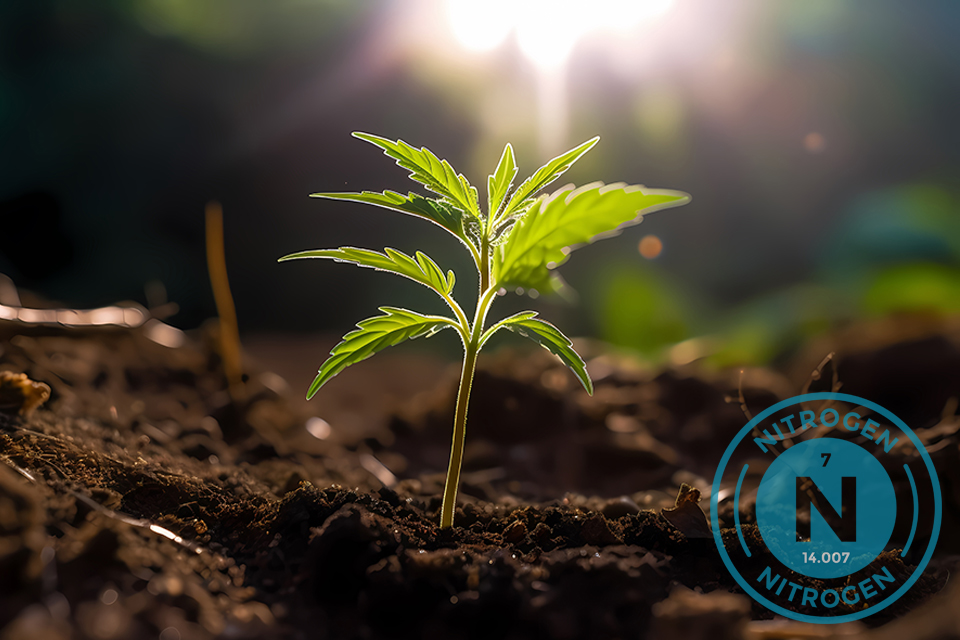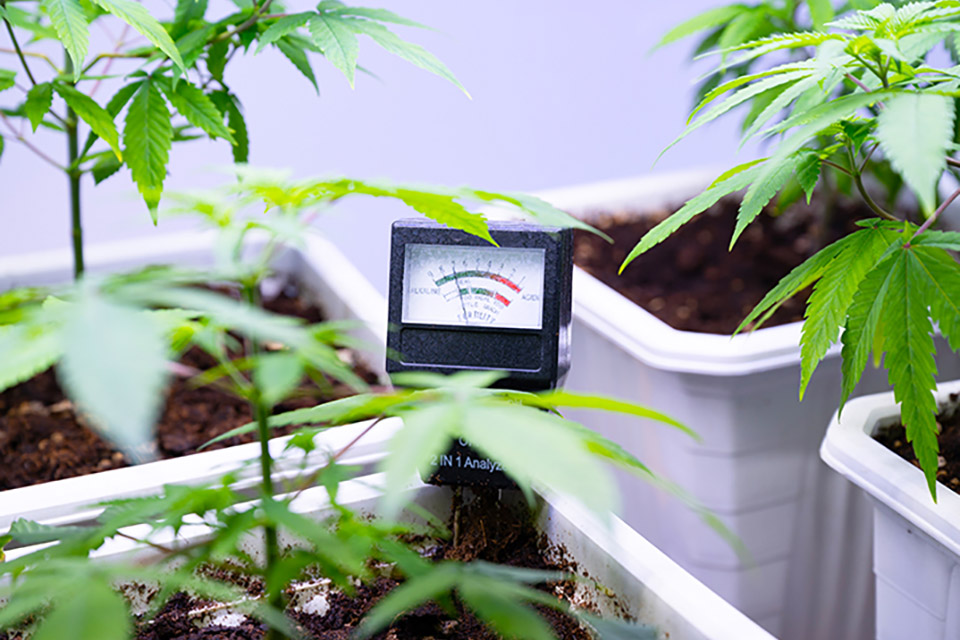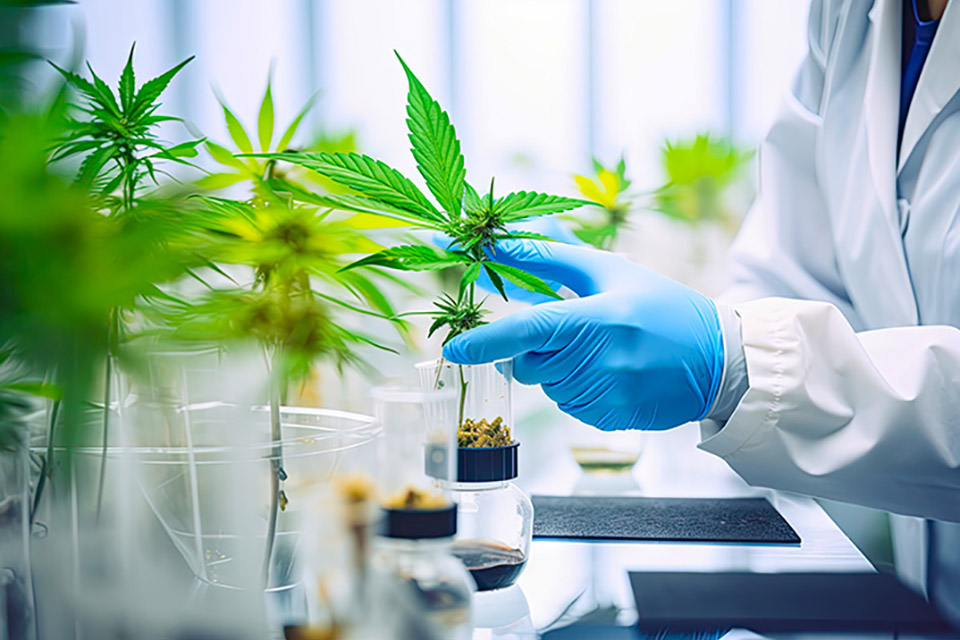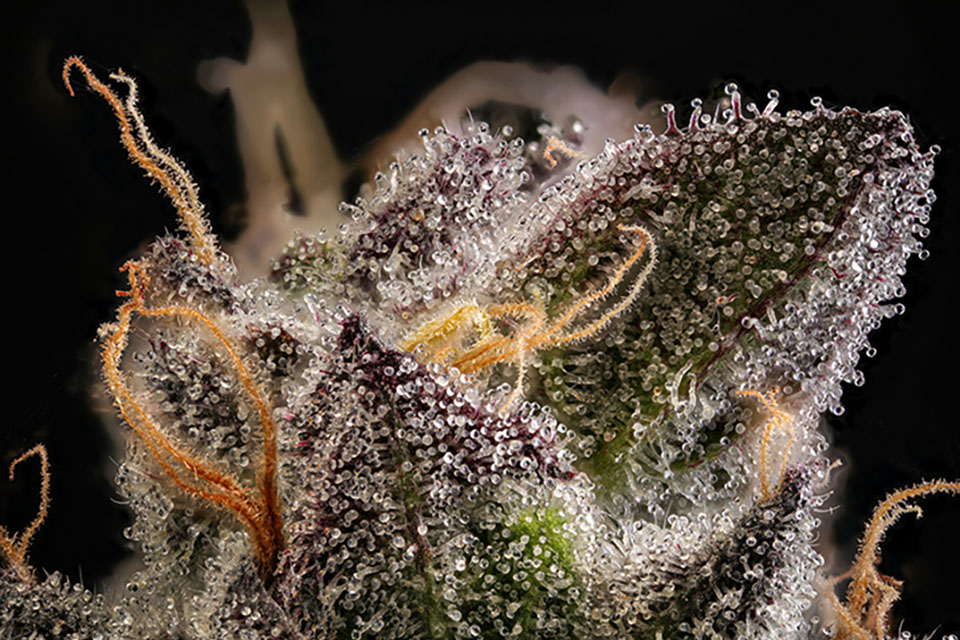
Nitrogen is a crucial element for the growth and development of cannabis plants. Its significance lies in its effects on plant development. Growers benefit from learning how to identify nitrogen deficiency and excess, the best practices for nitrogen management, and how nitrogen impacts the quality of cannabis.
Nitrogen and Its Effects
Nitrogen is integral to several biochemical processes in the plant that dictate growth, development, and quality.
Nitrogen in Photosynthesis and Protein Synthesis
One of the foremost roles of nitrogen in cannabis development is its involvement in photosynthesis. This process is the life force of all green plants, where light energy is converted into chemical energy, producing glucose and oxygen. Nitrogen contributes to the manufacturing of chlorophyll, the green pigment that absorbs sunlight for photosynthesis.
Nitrogen is also a building block for amino acids, the basis for proteins. Proteins act as the main building materials for plant cells. They control nearly all life processes, from cell structure and enzymes to antibodies that ward off diseases.
Impact of Nitrogen on Cannabis Plant Development
The presence of nitrogen considerably influences the overall development of your cannabis plants. It promotes robust growth of stems and leaves, leading to a lush, bushy appearance, a characteristic of healthy cannabis plants. Furthermore, adequate nitrogen levels contribute to richer, darker green foliage, meaning good health.
In the early vegetative stage of cannabis growth, nitrogen encourages rapid and vigorous growth, setting a strong foundation for the flowering stage. However, in the later stages, different nutrients come into the spotlight, and nitrogen becomes less prominent.
Identifying Nitrogen Deficiency and Excess
Recognizing the signs of nitrogen deficiency or excess in your cannabis plants can be a game-changer. Early identification and prompt intervention can save your crop from significant damage.
Symptoms of Nitrogen Deficiency
Nitrogen deficiency in cannabis plants manifests in several ways. The most common symptom is a noticeable lightening or yellowing of the leaves, beginning from the older, lower leaves and gradually moving towards the younger, upper parts of the plant. This is because, in the case of a nitrogen shortage, the plant will prioritize the newer, topmost growth and draw nitrogen from older leaves to sustain its growth.
Effects of Nitrogen Excess on Cannabis Growth
While nitrogen is indeed essential for cannabis plants, too much can be just as harmful as too little. Nitrogen toxicity, as it’s referred to, typically manifests as dark green or even bluish leaves due to an overabundance of chlorophyll.
Furthermore, the leaves may look glossy and begin curling downwards at the edges, a phenomenon known as “the claw”. Excess nitrogen can also result in overly lush growth, making the plant more susceptible to pests and diseases.
Best Practices for Nitrogen Management
With the appropriate knowledge and careful observation, you can maintain optimal nitrogen levels in your cannabis plants with relative ease.
Choosing Nitrogen-Rich Fertilizers
The first step to managing nitrogen is selecting the right fertilizer. Numerous nitrogen-rich fertilizers are available in the market specifically designed for cannabis cultivation. These fertilizers come in different forms, such as liquid, solid, and even slow-release capsules.
When choosing a fertilizer, it’s essential to consider the amount of nitrogen it contains. You can find this information on the product’s label in the N-P-K ratio (Nitrogen, Phosphorus, Potassium) form. Look for a product with a higher first number, representing the nitrogen content.
Applying Nitrogen at Different Growth Stages
How and when you apply nitrogen to your cannabis plants can significantly influence their health and development. Generally, cannabis plants require more nitrogen during their early vegetative stage as this is when they experience substantial leaf and stem growth.
As the plant transitions into the flowering phase, it requires less nitrogen and more phosphorus and potassium for bud development. Consequently, most growers reduce or even eliminate nitrogen supplementation during this phase.
Nitrogen and Cannabis Quality
Understanding the impact of nitrogen on the quality of cannabis plants is crucial, as it influences plant growth and cannabinoid and terpene production.
Influence of Nitrogen on Cannabinoid and Terpene Production
Nitrogen plays a key role in the formation and synthesis of cannabinoids, the compounds primarily responsible for the psychoactive properties of cannabis. It is also involved in terpenes’ production, the aromatic compounds in cannabis responsible for its distinct aroma and flavor.
High amounts of nitrogen during the flowering stage can reduce trichome production, potentially lowering cannabinoid and terpene levels. This is why it’s crucial to decrease nitrogen input during this stage.
Balancing Nitrogen for Optimal Yield and Potency
Balancing nitrogen levels throughout the different growth stages of your cannabis plants is crucial to achieving the best yield and potency. Supplying the right amount of nitrogen at the right stage will enhance the cannabis plant’s health and vigor, leading to a higher cannabis crop yield.
Too much nitrogen, especially during the flowering phase, can dilute the potency of your cannabis plants by reducing the concentration of cannabinoids and terpenes. Therefore, carefully regulating and monitoring nitrogen levels is essential in achieving optimal yield and potency.
Key Considerations for Home Growers in the USA
For home growers in the USA, understanding nitrogen’s unique role and needs in cannabis cultivation can significantly improve their growth results. This includes choosing nitrogen-rich fertilizers, knowing when to apply nitrogen at different growth stages, and understanding how nitrogen levels impact the quality of cannabis plants.



